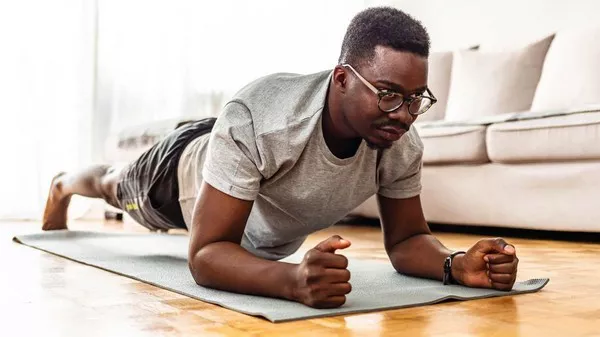Improving cardiovascular fitness is a goal many people strive to achieve for various reasons, including better health, weight management, and enhanced athletic performance. While significant improvements in cardiovascular fitness typically take time, it is possible to make noticeable progress within a two-week period with dedication and the right approach. This article will guide you through effective strategies and exercises to boost your cardio fitness in just two weeks.
Understanding Cardiovascular Fitness
Cardiovascular fitness, also known as cardiorespiratory endurance, is the ability of the heart, lungs, and blood vessels to deliver oxygen to your muscles during sustained physical activity. Improving your cardiovascular fitness enhances your overall health, increases your energy levels, and reduces the risk of chronic diseases such as heart disease, stroke, and diabetes.
Setting Realistic Goals
Before embarking on your two-week cardio improvement journey, it is crucial to set realistic and achievable goals. Understand that while you can make significant progress in two weeks, it is a short period, and the improvements will be a stepping stone for long-term fitness. Set specific, measurable, attainable, relevant, and time-bound (SMART) goals to keep you motivated and on track.
Creating a Structured Plan
To maximize your cardiovascular fitness improvement in two weeks, you need a structured and well-balanced plan. Your plan should include a mix of aerobic exercises, high-intensity interval training (HIIT), and activities that target different muscle groups. Here is a sample two-week plan:
Week 1: Building a Foundation
Day 1: Moderate-Intensity Cardio
- Warm-up: 5-10 minutes of light jogging or brisk walking
- Main workout: 30 minutes of moderate-intensity cardio (e.g., jogging, cycling, or swimming)
- Cool down: 5-10 minutes of stretching
Day 2: High-Intensity Interval Training (HIIT)
- Warm-up: 5-10 minutes of light jogging or brisk walking
- Main workout: 20 minutes of HIIT (e.g., 1 minute of sprinting followed by 1 minute of walking, repeated 10 times)
- Cool down: 5-10 minutes of stretching
Day 3: Active Recovery
- Light activity: 30-45 minutes of low-intensity activities (e.g., walking, yoga, or stretching)
Day 4: Steady-State Cardio
- Warm-up: 5-10 minutes of light jogging or brisk walking
- Main workout: 40 minutes of steady-state cardio (e.g., jogging, cycling, or swimming)
- Cool down: 5-10 minutes of stretching
Day 5: HIIT
- Warm-up: 5-10 minutes of light jogging or brisk walking
- Main workout: 20 minutes of HIIT
- Cool down: 5-10 minutes of stretching
Day 6: Cross-Training
Choose an alternative cardio activity (e.g., dancing, rowing, or playing a sport) for 30-45 minutes
Day 7: Rest
See Also: What Is a Spin Bike: A Comprehensive Guide
Week 2: Intensifying the Effort
Day 8: Moderate-Intensity Cardio
- Warm-up: 5-10 minutes of light jogging or brisk walking
- Main workout: 35 minutes of moderate-intensity cardio
- Cool down: 5-10 minutes of stretching
Day 9: HIIT
- Warm-up: 5-10 minutes of light jogging or brisk walking
- Main workout: 25 minutes of HIIT (e.g., 1 minute of sprinting followed by 1 minute of walking, repeated 12 times)
- Cool down: 5-10 minutes of stretching
Day 10: Active Recovery
- Light activity: 30-45 minutes of low-intensity activities
Day 11: Steady-State Cardio
- Warm-up: 5-10 minutes of light jogging or brisk walking
- Main workout: 45 minutes of steady-state cardio
- Cool down: 5-10 minutes of stretching
Day 12: HIIT
- Warm-up: 5-10 minutes of light jogging or brisk walking
- Main workout: 25 minutes of HIIT
- Cool down: 5-10 minutes of stretching
Day 13: Cross-Training
Choose an alternative cardio activity for 30-45 minutes
Day 14: Rest
Incorporating Strength Training
While the focus is on improving cardiovascular fitness, incorporating strength training into your routine is essential. Strength training helps build muscle, which in turn can improve your metabolism and support overall fitness. Aim to include at least two days of strength training per week, targeting major muscle groups with exercises such as squats, lunges, push-ups, and planks.
Nutrition and Hydration
Proper nutrition and hydration play a crucial role in enhancing cardiovascular fitness. Ensure you are consuming a balanced diet rich in whole grains, lean proteins, healthy fats, fruits, and vegetables. Stay hydrated by drinking plenty of water throughout the day, especially before, during, and after workouts. Avoid sugary drinks and excessive caffeine, as they can negatively impact your hydration levels and energy.
Getting Adequate Rest and Recovery
Rest and recovery are vital components of any fitness plan. Your body needs time to repair and rebuild after intense workouts. Ensure you get 7-9 hours of quality sleep each night to support your recovery and overall health. Listen to your body and take rest days when needed to prevent overtraining and injuries.
Tracking Progress
Tracking your progress is essential to stay motivated and make adjustments to your plan if necessary. Keep a fitness journal or use a fitness app to log your workouts, monitor your heart rate, and record any improvements in your endurance and performance. Celebrate small milestones and use them as motivation to keep pushing forward.
Staying Motivated
Staying motivated throughout your two-week cardio improvement journey can be challenging, but it is crucial for success. Here are some tips to help you stay motivated:
Set Short-Term Goals: Break your two-week goal into smaller, manageable milestones and celebrate each achievement.
Find a Workout Buddy: Partnering with a friend or family member can make workouts more enjoyable and keep you accountable.
Mix Up Your Routine: Incorporate a variety of exercises and activities to keep your workouts interesting and prevent boredom.
Listen to Music or Podcasts: Create a motivating playlist or listen to engaging podcasts to make your workouts more enjoyable.
Visualize Your Success: Picture yourself achieving your fitness goals and the benefits you will gain from improved cardiovascular fitness.
Safety Considerations
Safety should always be a priority when embarking on a fitness journey. Here are some important safety considerations:
Warm-Up and Cool Down: Always warm up before starting your workouts and cool down afterward to prevent injuries and aid recovery.
Listen to Your Body: Pay attention to how your body feels during and after workouts. If you experience pain, dizziness, or shortness of breath, stop exercising and seek medical advice if necessary.
Stay Hydrated: Drink plenty of water before, during, and after workouts to stay hydrated and maintain optimal performance.
Use Proper Form: Ensure you are using correct form and technique during exercises to prevent injuries. Consider working with a fitness professional if you are unsure.
Wear Appropriate Gear: Use appropriate footwear and clothing for your workouts to support your performance and prevent injuries.
Conclusion
Improving your cardiovascular fitness in two weeks is an achievable goal with the right approach and dedication. By following a structured plan that includes a mix of moderate-intensity cardio, HIIT, and strength training, you can make significant progress in a short period. Remember to set realistic goals, prioritize nutrition and hydration, get adequate rest, and stay motivated. Always prioritize safety and listen to your body to prevent injuries. With commitment and consistency, you can boost your cardio fitness and set the foundation for long-term health and wellness.
[inline_related_posts title=”You Might Be Interested In” title_align=”left” style=”list” number=”6″ align=”none” ids=”10613,10610,10460″ by=”categories” orderby=”rand” order=”DESC” hide_thumb=”no” thumb_right=”no” views=”no” date=”yes” grid_columns=”2″ post_type=”” tax=””]


































